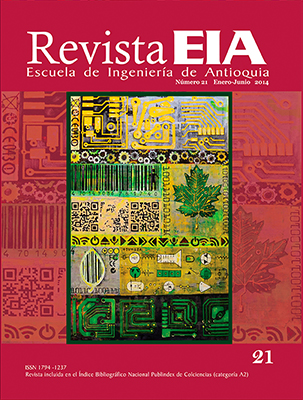METODOLOGÍA DE SOLUCIÓN PARA PLANEAMIENTO DE LA TRANSMISIÓN CONSIDERANDO INCERTIDUMBRE EN LA DEMANDA Y PROPUESTAS DE DIFERENTES CONDUCTORES
METODOLOGÍA DE SOLUCIÓN PARA PLANEAMIENTO DE LA TRANSMISIÓN CONSIDERANDO INCERTIDUMBRE EN LA DEMANDA Y PROPUESTAS DE DIFERENTES CONDUCTORES


This work is licensed under a Creative Commons Attribution-NonCommercial-NoDerivatives 4.0 International License.
Copyright statement
The authors exclusively assign to the Universidad EIA, with the power to assign to third parties, all the exploitation rights that derive from the works that are accepted for publication in the Revista EIA, as well as in any product derived from it and, in in particular, those of reproduction, distribution, public communication (including interactive making available) and transformation (including adaptation, modification and, where appropriate, translation), for all types of exploitation (by way of example and not limitation : in paper, electronic, online, computer or audiovisual format, as well as in any other format, even for promotional or advertising purposes and / or for the production of derivative products), for a worldwide territorial scope and for the entire duration of the rights provided for in the current published text of the Intellectual Property Law. This assignment will be made by the authors without the right to any type of remuneration or compensation.
Consequently, the author may not publish or disseminate the works that are selected for publication in the Revista EIA, neither totally nor partially, nor authorize their publication to third parties, without the prior express authorization, requested and granted in writing, from the Univeridad EIA.
Show authors biography
RESUMEN
En este artículo se presenta una metodología de solución para resolver el problema de planeamiento estático de redes de transmisión de energía eléctrica, considerando incertidumbre en la demanda y selección de conductores en las líneas de transmisión que hacen parte de los nuevos corredores. Este problema de optimización se resuelve usando un algoritmo genético especializado que utiliza la lógica del algoritmo genético propuesto por Chu y Beasley, combinado con una técnica exacta. La metodología se prueba sobre el sistema eléctrico colombiano de 93 nodos y 155 líneas candidatas. Los resultados obtenidos mejoran la solución para el planeamiento estático del sistema eléctrico colombiano.
ABSTRACT
This paper presents a methodology for solving the static planning problem in electrical energy transmission networks considering uncertainty in demand and conductor selection for the transmission lines that belong to the set of all new paths. The optimization problem is solved using a specialized genetic algorithm, which uses the logic of the genetic algorithm proposed by Chu and Beasley, combined with exact optimization. The testing bench for the proposed methodology was chosen to be the Colombian power system of 93 buses and 155 candidate lines. The results obtained enhance the traditional solution for the Colombian power system regarding the transmission network planning study.
Article visits 320 | PDF visits 215
